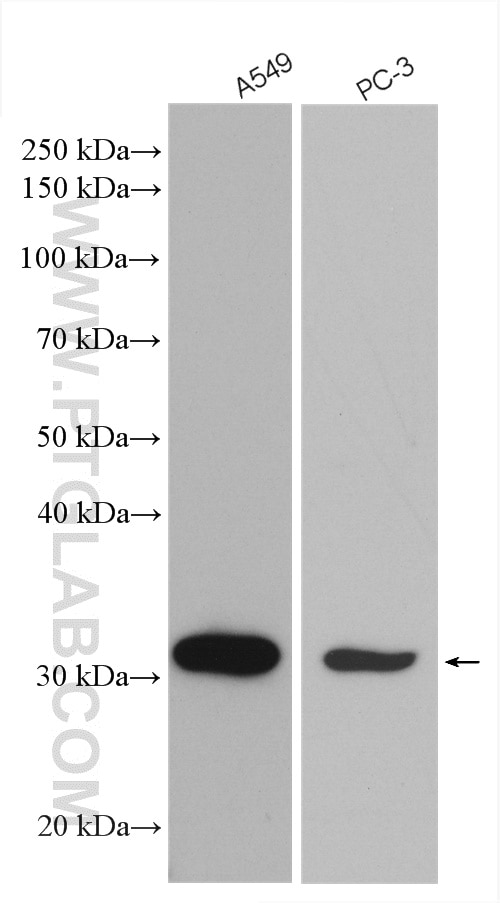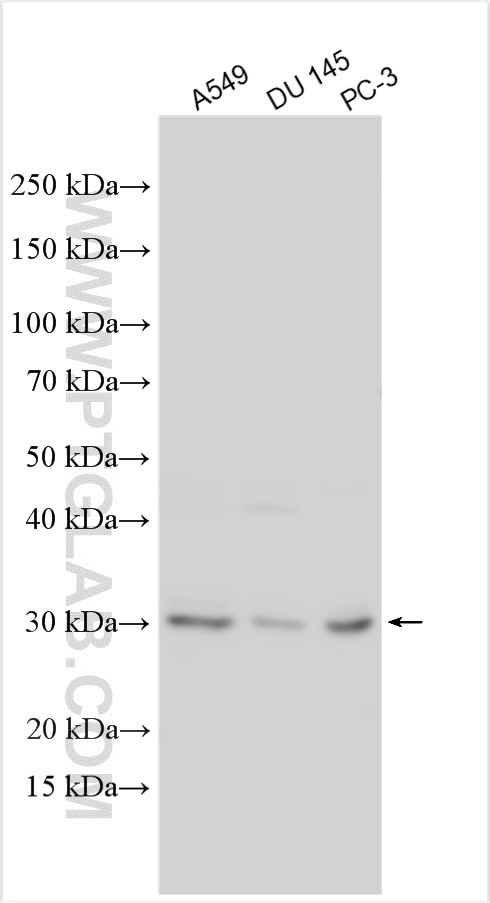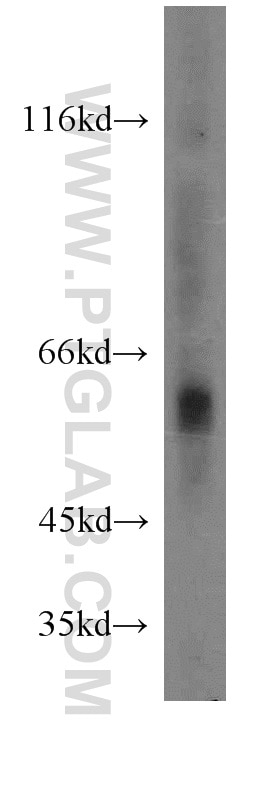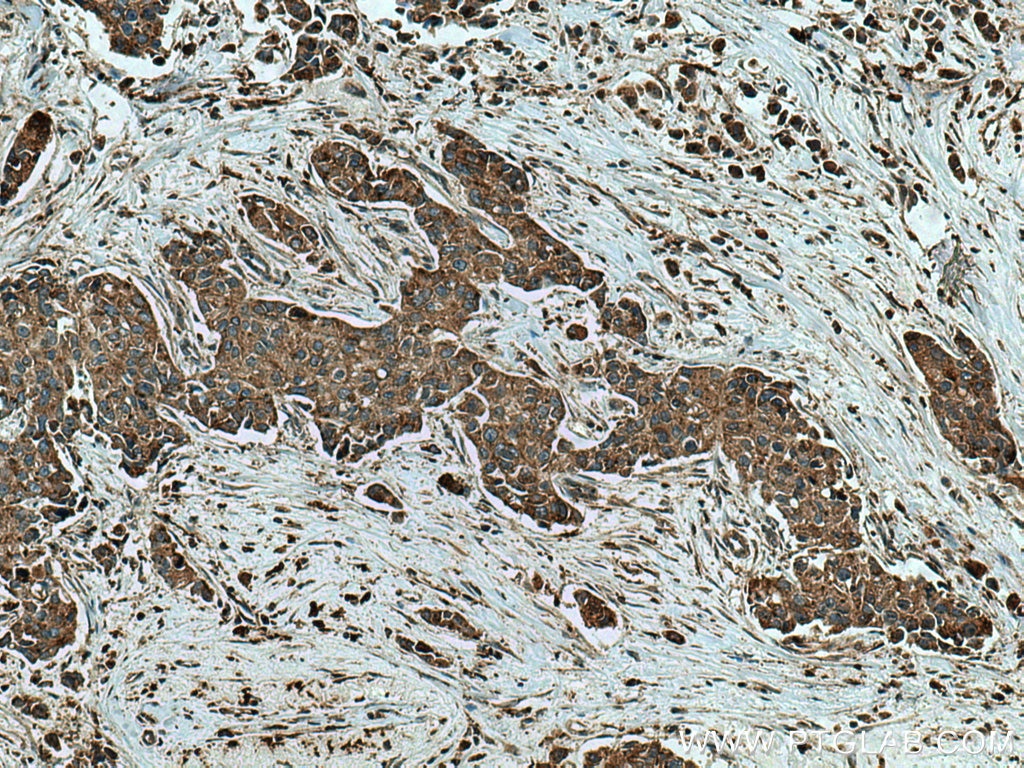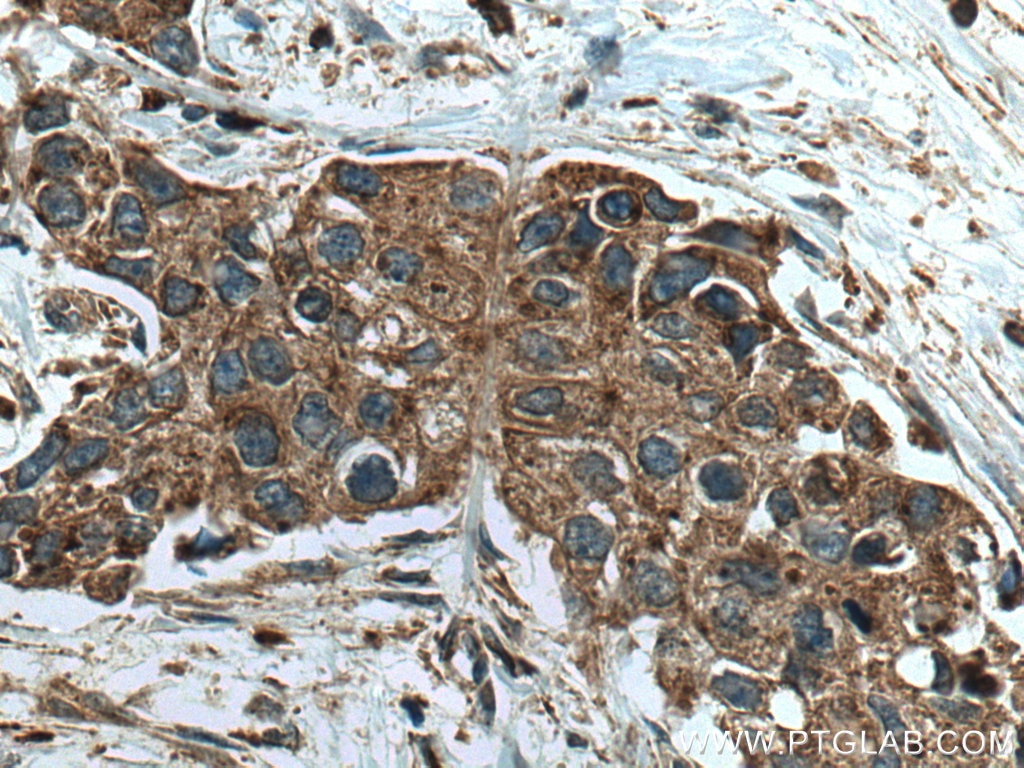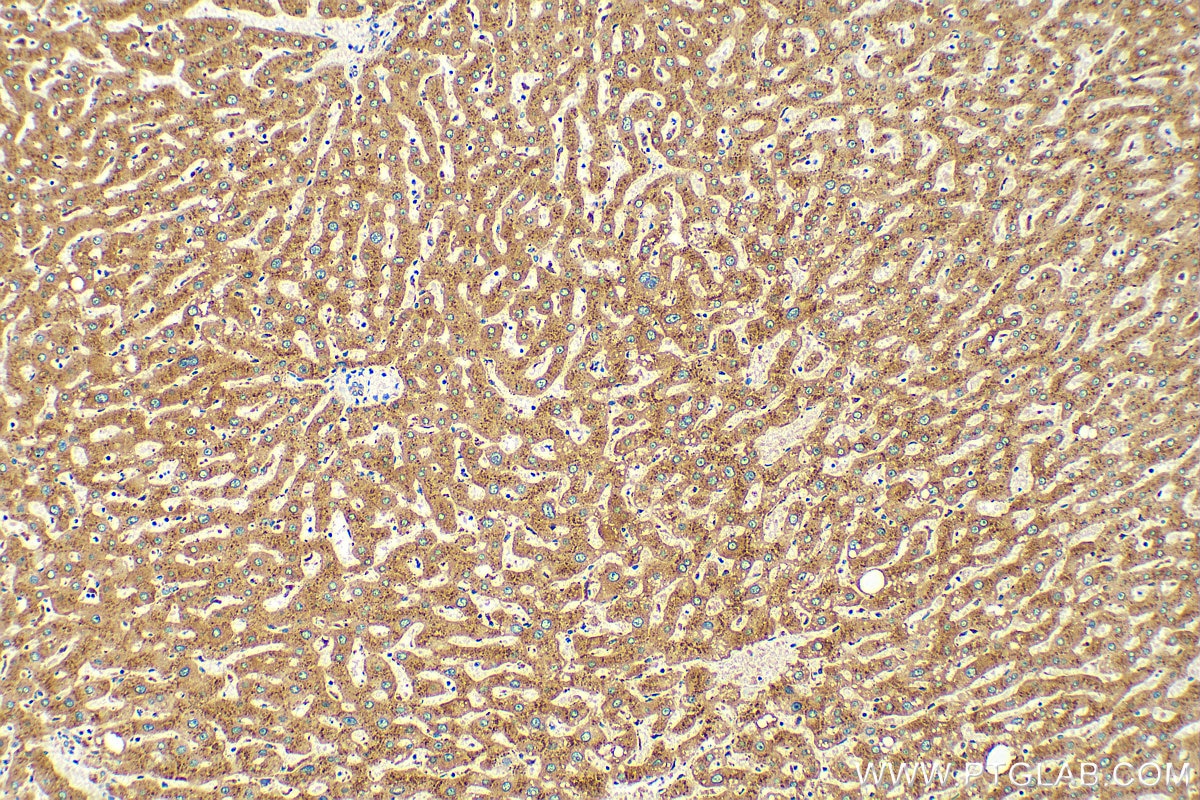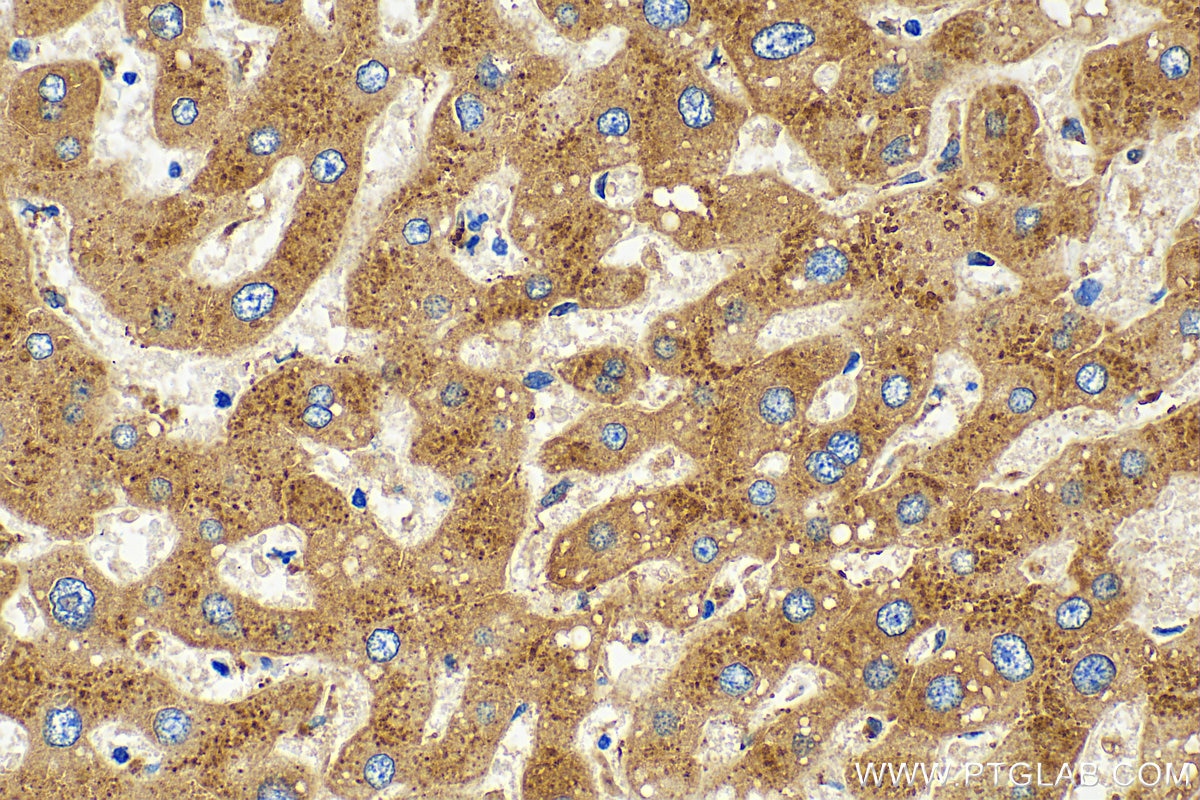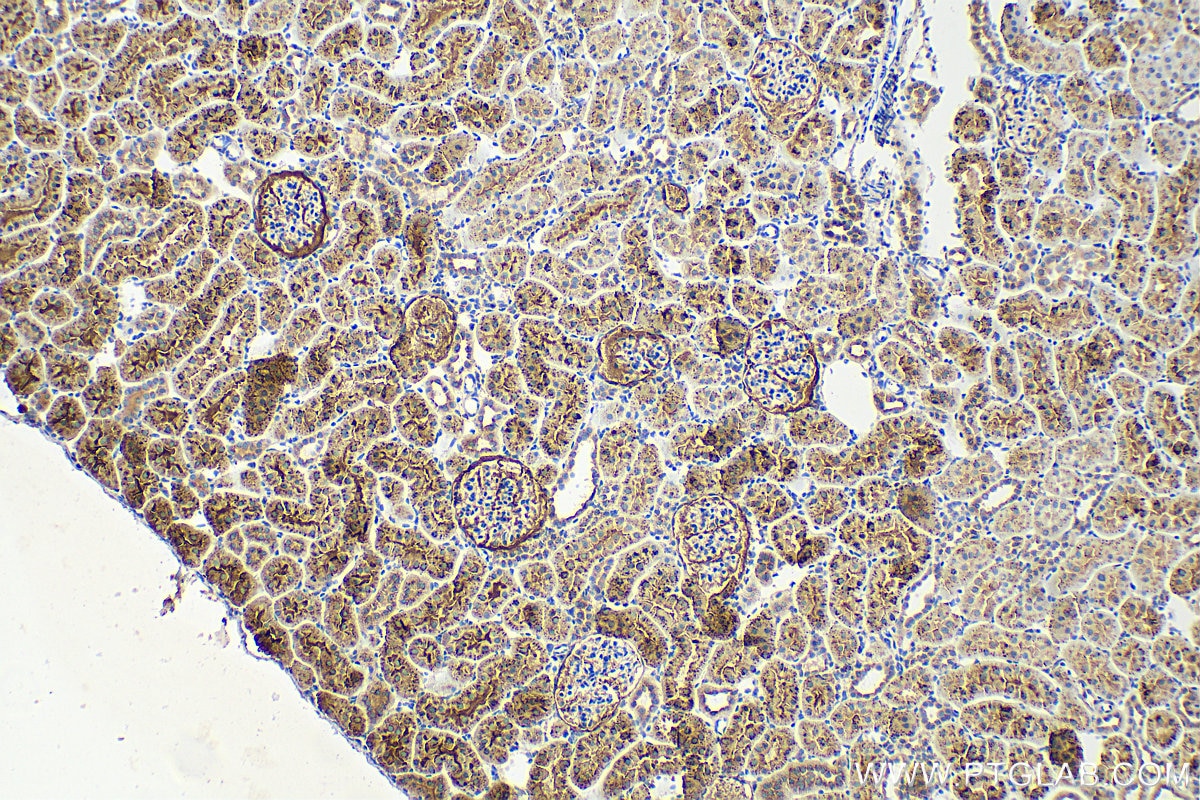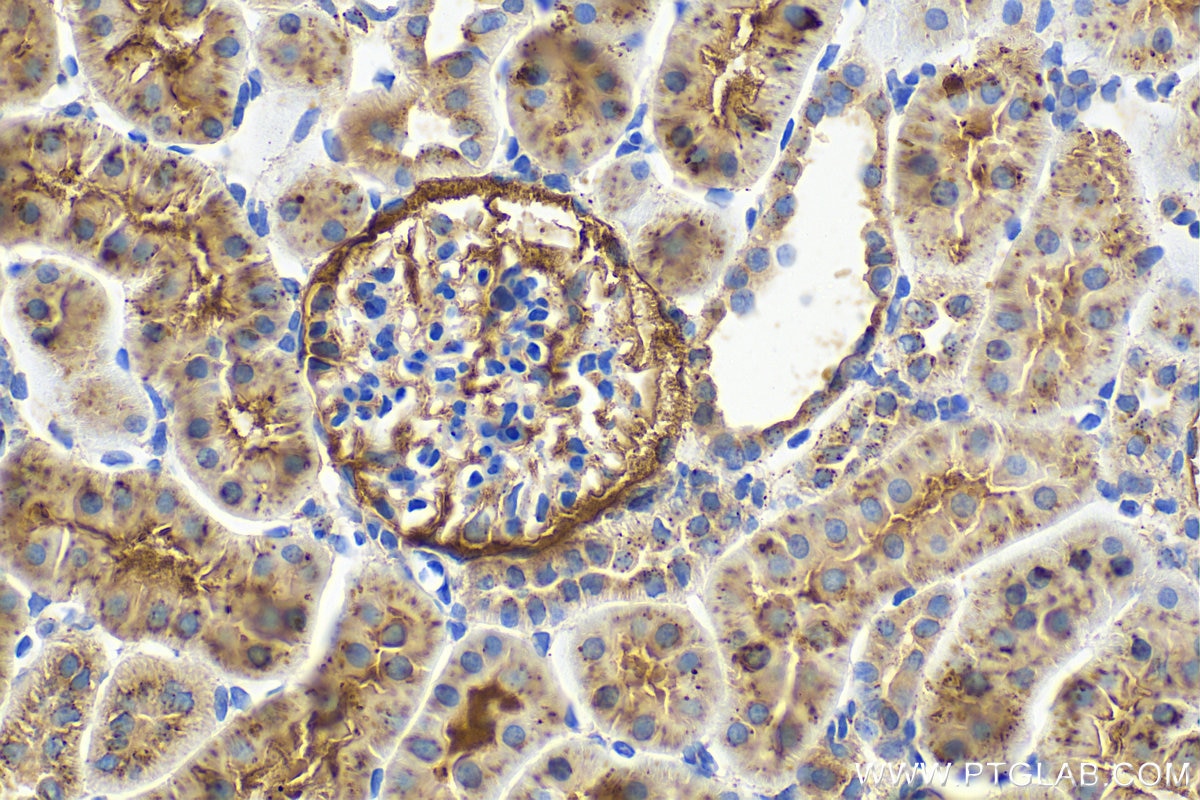Anticorps Polyclonal de lapin anti-Cathepsin A
Cathepsin A Polyclonal Antibody for WB, IHC, ELISA
Hôte / Isotype
Lapin / IgG
Réactivité testée
Humain, rat, souris
Applications
WB, IHC, ELISA
Conjugaison
Non conjugué
N° de cat : 15020-1-AP
Synonymes
Galerie de données de validation
Applications testées
| Résultats positifs en WB | cellules A549, cellules DU 145, cellules PC-3, cellules Sp2/0 |
| Résultats positifs en IHC | tissu hépatique humain, tissu de cancer du sein humain, tissu rénal de rat il est suggéré de démasquer l'antigène avec un tampon de TE buffer pH 9.0; (*) À défaut, 'le démasquage de l'antigène peut être 'effectué avec un tampon citrate pH 6,0. |
Dilution recommandée
| Application | Dilution |
|---|---|
| Western Blot (WB) | WB : 1:500-1:3000 |
| Immunohistochimie (IHC) | IHC : 1:750-1:3000 |
| It is recommended that this reagent should be titrated in each testing system to obtain optimal results. | |
| Sample-dependent, check data in validation data gallery | |
Applications publiées
| WB | See 5 publications below |
| IHC | See 2 publications below |
| FC | See 1 publications below |
Informations sur le produit
15020-1-AP cible Cathepsin A dans les applications de WB, IHC, ELISA et montre une réactivité avec des échantillons Humain, rat, souris
| Réactivité | Humain, rat, souris |
| Réactivité citée | Humain, souris |
| Hôte / Isotype | Lapin / IgG |
| Clonalité | Polyclonal |
| Type | Anticorps |
| Immunogène | Cathepsin A Protéine recombinante Ag7073 |
| Nom complet | cathepsin A |
| Masse moléculaire calculée | 54 kDa |
| Poids moléculaire observé | 54-60, 32, 20 kDa |
| Numéro d’acquisition GenBank | BC000597 |
| Symbole du gène | Cathepsin A |
| Identification du gène (NCBI) | 5476 |
| Conjugaison | Non conjugué |
| Forme | Liquide |
| Méthode de purification | Purification par affinité contre l'antigène |
| Tampon de stockage | PBS with 0.02% sodium azide and 50% glycerol |
| Conditions de stockage | Stocker à -20°C. Stable pendant un an après l'expédition. L'aliquotage n'est pas nécessaire pour le stockage à -20oC Les 20ul contiennent 0,1% de BSA. |
Informations générales
CTSA is also named as PPGB(protective protein for beta-galactosidase), PPCA(protective protein cathepsin A), cathepsin A, carboxypeptidase C, carboxypeptidase L and belongs to the peptidase S10 family. It is a ubiquitously expressed multifunctional enzyme, with deamidase, esterase, and carboxypeptidase activities and a preference for substrates with hydrophobic amino acid residues at the P1-prime position. It can be cleaved into the following 2 chains and defects in CTSA are the cause of galactosialidosis (GSL). This protein has 2 glycosylation sites. CTSA is synthesized as a 54-kDa precursor protein and composed of 32- and 20-kDa subunits linked together by disulfide bonds(PMID: 16461364,19574551).
Protocole
| Product Specific Protocols | |
|---|---|
| WB protocol for Cathepsin A antibody 15020-1-AP | Download protocol |
| IHC protocol for Cathepsin A antibody 15020-1-AP | Download protocol |
| Standard Protocols | |
|---|---|
| Click here to view our Standard Protocols |
Publications
| Species | Application | Title |
|---|---|---|
J Hepatol SNX10 mediates alcohol-induced liver injury and steatosis via regulating chaperone-mediated autophagy activation. | ||
Am J Cancer Res High cathepsin A protein expression predicts poor prognosis and tumor recurrence of hepatocellular carcinoma patients after curative hepatectomy | ||
Mol Carcinog Resistance to abemaciclib is associated with increased metastatic potential and lysosomal protein deregulation in breast cancer cells | ||
Sci Rep Prognostic significance and oncogene function of cathepsin A in hepatocellular carcinoma. | ||
Front Cell Neurosci Neu1 Is Released From Activated Microglia, Stimulating Microglial Phagocytosis and Sensitizing Neurons to Glutamate. | ||
Nature Anti-tumour immunity controlled through mRNA m6A methylation and YTHDF1 in dendritic cells. |
